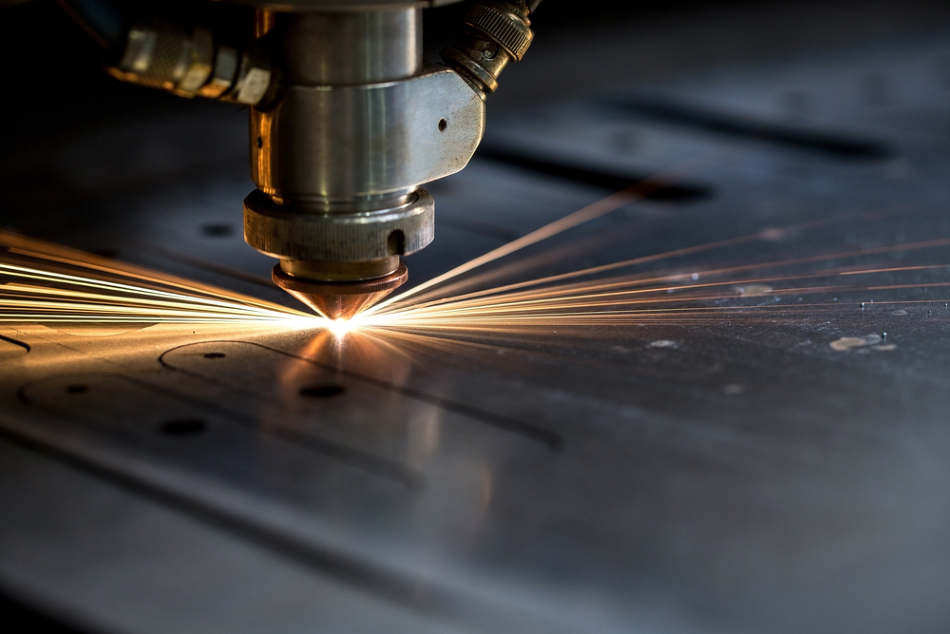
Image Credit: Guryanov Andrey/Shutterstock.com
Leather is a long-lasting material that is made by tanning animal rawhide and skins. This versatile material is commonly used in fashionable pieces such as shoes, bags, wallets, and belts; however, leather is also found in furniture such as car seats and household couches. To meet the demand for leather’s wide scope of functionality and desirability, a process called laser cutting is put into practice.
What is Laser Cutting?
Laser cutting is an industrial technology that uses a light beam to cut materials. These commercial lasers are typically high powered and use a motion control system; they are led by a CNC or G-code that shapes the desired product pattern. The pattern begins to be cut out once the laser beam is positioned at the material - the cutouts tend to burn or vaporize away, and the edges left are smooth and clear-cut.
A few laser cutting techniques include but are not limited to melt and blow, vaporization cutting, and flame cutting. Melt and blow laser cutting is regularly used on metals - a gas jet blows melted material out of the cutout.
Vaporization cutting makes the beam heat the surface of the material and creates a keyhole. The hole is then deepened as the absorptivity increases, and the hole keeps growing as the material boils and vapor erodes to craft a design. Flame cutting, also known as reactive cutting, essentially burns into the material and resembles a torch-like tool.
Although laser cutting is commonly used in genuine leather customization, it is applied to artificial, suede, natural, Alcantara, nubuck, and napped leather too. One of the biggest disadvantages of producing leather goods is ensuring great cut quality - knife cutters tend to fray the material and leave unkempt tracks.
Other conventional technology for leather manufacturing, such as embossing and embroidery machines, work at slow speeds with relatively high costs. Laser cutting is the best way to avoid this choppy and costly process while guaranteeing perfectly smooth cutouts.
Advantages and Disadvantages of Laser Cutting
The main advantages of laser cutting are power, precision, and smoothness. Laser cutting can cut into multiple materials, meaning, if a product consists of more than just leather - perhaps, acrylic or metal - the lasers can easily work through them as well.
This power is unmatched in other standard methods of leather cutting - punching presses and machine cutting rarely match these levels of power and precision. The combination of power and precision allows for more potential for the artistry of leather product design and customized pieces. Many more complex, smaller, and detailed designs are possible with the accuracy of laser cutting. Since the cutting tool is so accurate and clean-cut, manufacturers rarely fear the damaging of leather products.
Despite the appealing advantages of laser cutting, there remain some disadvantages. Due to the cutouts burning and vaporizing heavy fumes are generated - these fumes are part of the flawed, high energy consumption levels of laser cutting. In addition to the harmful fumes, depending on the desired product, is the potentially high cost of some laser cutting parts.
Conclusion
The leather industry is more successful and customized with laser cutting technology. This laser technique deters from the traditionally slow, manual, and unpredictable previous methods. Many benefits have arisen from the use of laser cutting, most notably, higher efficiency, less material waste, and more customizable products. Only a computer and a laser cutter are needed to create almost any design - the machine cuts the material into the sought-after product without any external tools and technology.
Laser cutters are not exclusive to leather production. These machines are also used for marking, engraving, and drilling in many industries.
References and Further Reading
https://www.behance.net/
https://www.industrial-lasers.com/cutting/article/16485187/laser-cutting-technology-in-the-leather-industry-progresses
http://www.cct-uk.com/laser_cutting_leather.htm
https://www.troteclaser.com/en-gb/applications/leather/
https://all3dp.com/2/laser-cut-leather-what-you-need-to-know/
Disclaimer: The views expressed here are those of the author expressed in their private capacity and do not necessarily represent the views of AZoM.com Limited T/A AZoNetwork the owner and operator of this website. This disclaimer forms part of the Terms and conditions of use of this website.